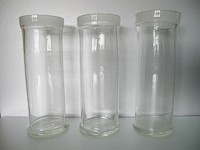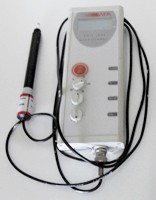Unit 5 The Wonderful Solvent - Water
Unit 7 Living Things and Air
Topic
Man-made dead zones in aquatic environments
Curriculum Link
5 The Wonderful Solvent - Water (Be aware of micro-organisms present in water, show concern for the water pollution problem)
7 Living Things and Air (Green plants make food through photosynthesis)
Estimated Lesson Time
40 minutes
Introduction
Dead zones are regions in aquatic environment where dissolved oxygen in water drop to extremely low level. Most marine life, such as fish and plants, must migrate away from oxygen depleted water, or they will die. Some micro-organisms and bacteria, however, can survive in these dead zones by feeding on nutrients in the overlying waters.
Although dead zones develop in the nature, some of them are caused by human activities and associated with sewage wastes and the wide use of fertilizers. Since dead zones may cause negative effects to aquatic ecosystems, investigations have been made in recent years to understand more about dead zones so that we can find ways to reduce the negative effects.
This investigation is going to simulate how a dead zone can be developed. Phytoplankton is microscopic plants that exist in aquatic environment such as ponds. They need light and some compounds to grow. When excess nutrients are provided, large blooms of phytoplankton occur. In the absence of light, phytoplankton dies and sinks into deep water. They are then decomposed by bacteria in a process that consumes oxygen. Therefore, dissolved oxygen in water decreases to an extremely low level and a dead zone is produced.
Background information can be obtained from:
http://en.wikipedia.org/wiki/Dead_zone_(ecology)
http://www.ncddc.noaa.gov/hypoxia/
http://www.afcd.gov.hk/english/fisheries/hkredtide/redtide/redtide_hab.html
Key Question
How do wastes of human activities create dead zones in aquatic environment?
Learning Objectives
In this activity, the students should be able to
- be aware of the existence of micro-organisms in water;
- recognize that green plants make their own food through photosynthesis;
- show concern for the water pollution problem;
- acquire planning and designing skills (SP3) in designing an experiment to measure and compare concentration of dissolved oxygen in different aquatic environments;
- acquire measuring skills (SP1) and experimenting skills (SP4) in preparing different aquatic environments;
- acquire comparing and classifying skills (SP2) by identifying the trend of oxygen concentration in different aquatic environments;
- acquire interpreting data skills (SP5) in analysing the data collected.
Teaching Plan
| Task (Time) | Brief Description | Materials | Objectives |
|---|---|---|---|
|
Engagement |
|
(1), (2) & (3) | |
Exploration |
|
(4) & (5) | |
Evaluation |
Students analyse the set(s) of data to identify and compare the trend of concentration of dissolved oxygen measured in different aquatic environments | (6) | |
Elaboration & Explanation |
|
(7) |
Remarks:
- Although the estimated lesson time is 40 minutes, this experiment takes more than a week to complete.
- Teacher (or students under teacher's supervision) must collect water from ponds or streams, which is an outdoor activity.
- Nutrient to be added is fertilizer, such as potash.
- The unit of the reading of concentration of dissolved oxygen depends on the model of oxygen senor, for example, percentage, part per million (ppm), mg / L, etc.
- The best time to take readings is in the afternoon as this is the time period when there is a maximum oxygen production by phytoplankton under photosynthesis.
- According to the information provided by the NOAA (http://www.ncddc.noaa.gov/hypoxia/), when the concentration of dissolved oxygen in water is below 2 mg / L, that aquatic environment is a dead zone.
Apparatus and materials required:
- Empty plastic bottles (1.25 L or 2 L)
- three identical jars or bottles
- pond water
- tap water (or distilled water)
- fertilizer (e.g. potash)
- measuring cylinder
- beaker
- oxygen sensor (for measurement of concentration of dissolved oxygen in water)
 |
 |
 |
| Identical jars | Fertilizer (Potash) | Oxygen sensor and the probe |


